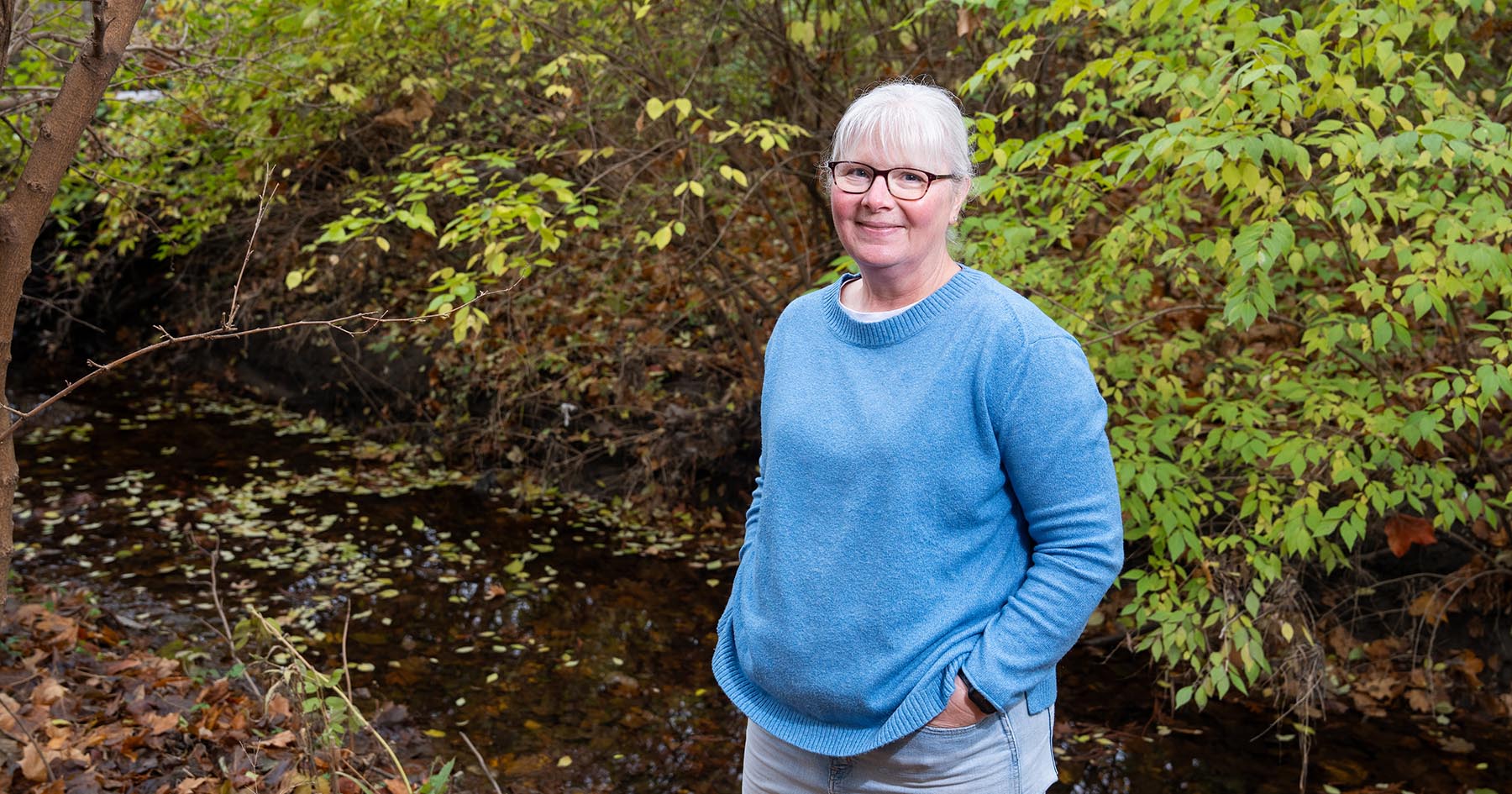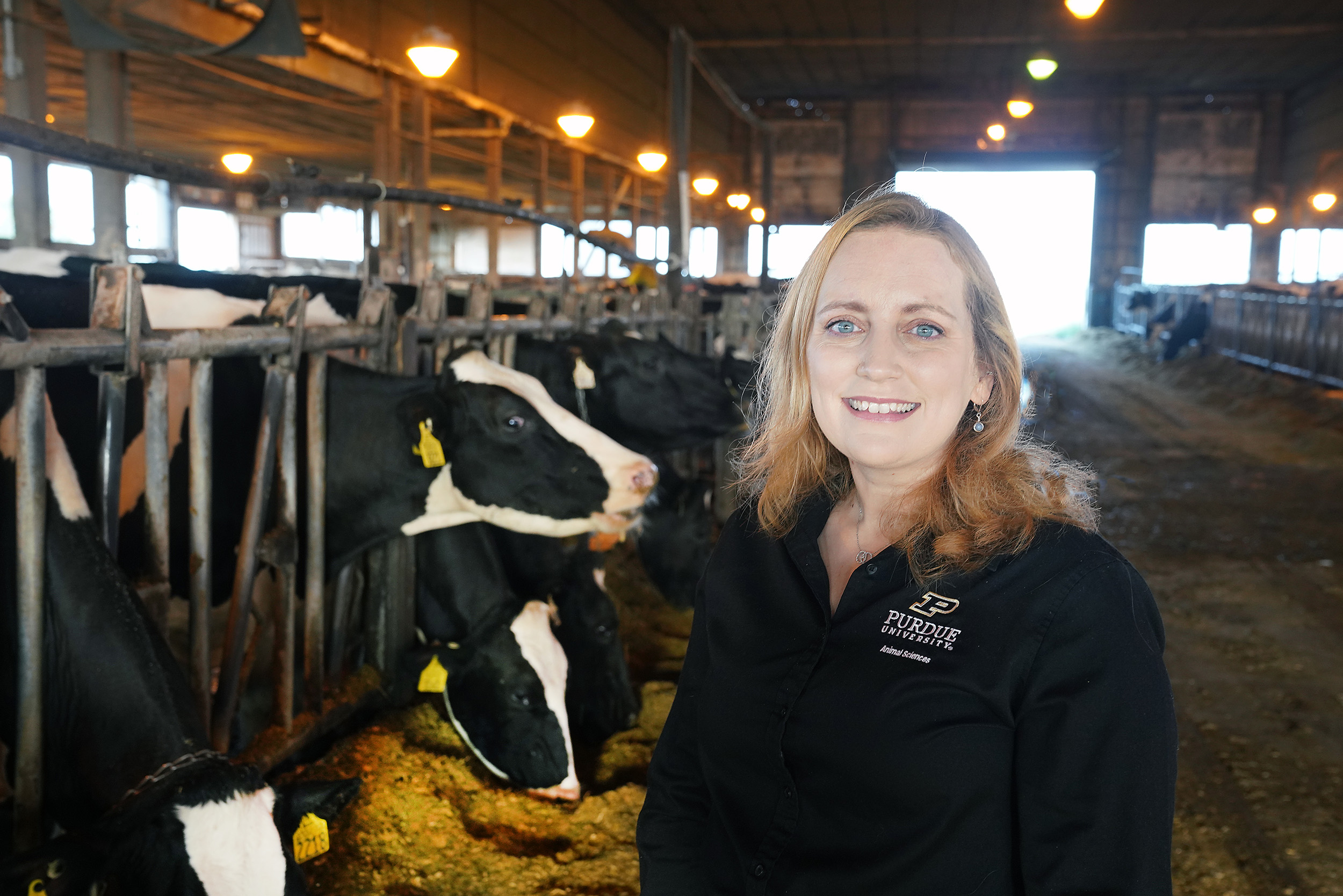National policy aimed at reducing U.S. greenhouse gases also would improve water quality
Sophisticated interdisciplinary study scrutinizes impact of multiple scenarios
A climate policy that raises the price of carbon-intensive products across the entire U.S. economy would yield a side benefit of reducing nitrate groundwater contamination throughout the Mississippi River Basin.
The Gulf of Mexico, an important U.S. fishery, also would see modest benefits from the nitrate reductions. These were among the conclusions of a recent study published in the Proceedings of the National Academy of Sciences (PNAS).
The study, led by four early career researchers, three of them from Purdue University, combined four scientific models to simulate how different aspects of climate policy, agricultural economics and the environment would interact. A major feature of the study traced how nitrogen that humans have converted into other forms, called reactive nitrogen, flows through the environment.
 Figure 3: Effect on nitrogen fertilizer applications of coupling wetland restoration with carbon pricing. (a) Absent carbon pricing ($0), restoration of wetlands over the tile-drained land causes market-mediated production spillovers of cropland beyond the central Corn Belt, thereby increasing local fertilizer use across much of the MB and offsetting the impacts of the wetland restoration policy. Imposing carbon pricing nearly eliminates this spillover effect and decreases fertilizer applications over most of the Mississippi Basin at (b) $51 and (c) $152 carbon prices.
Figure 3: Effect on nitrogen fertilizer applications of coupling wetland restoration with carbon pricing. (a) Absent carbon pricing ($0), restoration of wetlands over the tile-drained land causes market-mediated production spillovers of cropland beyond the central Corn Belt, thereby increasing local fertilizer use across much of the MB and offsetting the impacts of the wetland restoration policy. Imposing carbon pricing nearly eliminates this spillover effect and decreases fertilizer applications over most of the Mississippi Basin at (b) $51 and (c) $152 carbon prices. “Food production is generating a lot of the reactive nitrogen. Some comes from energy as well,” said study co-author Thomas Hertel, Distinguished Professor of Agricultural Economics at Purdue. “This is a big problem. The reactive nitrogen ends up in rural groundwater. Some of it ends up in the atmosphere. And of course, it ends up in the streams and eventually the Gulf of Mexico.”
Excessive fertilizer use creates a growing number of water-quality concerns, said Shan Zuidema, a research scientist at the University of New Hampshire’s Earth Systems Research Center. “Our models showed that with this climate policy, U.S. carbon emissions could significantly decline, which would translate into about a 3% to 4% reduction of the Gulf of Mexico dead zone in an average year.”
One of the study’s four linked models analyzed various issues related to climate change economics. Another model linked local policies to national and international agriculture prices, land use and the environment. A third produced an estimate of nitrate leaching in the entire Mississippi River Basin based on changes in fertilization rates and land cover. The fourth simulated vertical water exchange between the ground and atmosphere and horizontal transport through runoff and stream networks.
Central to the study was the “nitrogen cascade” concept that the University of Virginia’s James Galloway and his co-authors published in 2003. The concept states that a single nitrogen atom may trigger a cascade of effects in the atmosphere, terrestrial ecosystems, freshwater and marine systems, and on human health.
The PNAS study documented how much nitrogen gets harvested with the remainder getting put into the environment.
Galloway, UVA’s Sidman P. Poole Professor Emeritus of Environmental Sciences, who was not a co-author of the PNAS study, noted that for more than 100 years, an abundant supply of nitrogen has fueled agricultural production.
“Tracking these nitrogen losses, and trying to mitigate them, requires an approach that links economics, agroecology and hydrology to ensure that actions at one point in the chain do not have unintended consequences at another point.” The PNAS paper “is an excellent example of the type of work that is needed,” Galloway said.
The study included an assessment of policy outcomes that assigned the social cost of carbon to estimates ranging from $51 to $152 per ton of carbon dioxide equivalents.
“Fertilizer is most affected because ammonia fertilizer is largely converted natural gas,” Hertel said. The highest carbon price in the models reduced U.S. carbon emission by almost 50%. Coupled with an increase in nitrogen fertilizer prices, this reduced fertilizer applications by about 15% for corn production across the Mississippi River Basin.
The team also considered a scenario that restored wetlands in the central U.S. Corn Belt without a climate policy. The farmers in the area grew less corn and applied less fertilizer. But that prompted increased fertilizer applications in the untreated regions, resulting in negative spillover.
“It seems like every environmental policy we look at has spillovers. They haven’t been considered before, but when you think about the economics and what we call market-mediated spillovers, they’re pervasive,” said Hertel, who founded and is executive director of Purdue’s Global Trade Analysis Project (GTAP). Hertel and co-authors include a discussion of spillovers in a recent special issue of Environmental Research Letters that focuses on global-to-local-to-global sustainability analysis challenges.
The PNAS study looked only at carbon pricing and wetlands, but many other food system interventions lend themselves to similar analyses, including how a change in our diets could affect the nitrogen cascade. “How about reducing food waste, or reducing ethanol production? Or improving nitrogen use efficiency?” Hertel asked.
In addition to Hertel, the Purdue co-authors are: Jing Liu, research economist in agricultural economics;Maksym Chepeliev, principal research economist at GTAP; David Johnson, associate professor of industrial engineering and political science; and Uris Baldos, research associate professor of agricultural economics.





